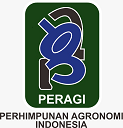Variations of Time for Composting Market Organic Waste Using Aerobic Microorganisms
Abstract
The use of fertilizers in agriculture is an absolute must, both organic fertilizers and inorganic fertilizers. Considering the increasing price of inorganic fertilizers, innovation is needed to make organic fertilizers from easily obtained materials, one of which is market organic waste. Among the aerobic microorganisms used are lignolytic, cellulotic, proteolytic, lipolytic and aminolytic which are capable of changing compost in time. The purpose of this study was to analyze the right time in the composting process so as to produce a maximum source of essential nutrients. The research method or stages used is to divide the composting time into 4 parts, namely 5 weeks, 6 weeks, 7 weeks and 8 weeks. The results showed that the C-Organic content in the 5-7 weeks composting phase met the minimum SNI standards, while in the 8-week composting phase it is below the minimum standard of SNI. Phosphorus content is also above the minimum limit of the standard determined by SNI, Meanwhile, Potassium and Nitrogen are below the minimum SNI standard. The content of secondary macronutrients such as Calcium, Magnesium, and Sodium does not exceed the maximum limit set by SNI.
Keywords
Full Text:
PDFReferences
Afandi, R. N. W. (2005). Ilmu Kesuburan Tanah. Kanisius.
Bachtiar, E. (2006). Ilmu Tanah. Fakultas Pertanian Universitas Sumatera Utara.
Bachtiar, R. A., Rifki, Y., Nurhayat, S., Wulandari, R. A., Kutsiadi, A., & Anifa, M. C. (2018). Komposisi Unsur Hara Kompos yang Dibuat dengan Bantuan Agen Dekomposer Limbah Bioetanol pada Level yang Berbeda. Jurnal Sains Peternakan, 16(2), 63–68.
Baroroh, A., & Prabang, S. R. (2016). Analisis kandungan unsur hara makro dalam kompos dari serasah daun bambu dan limbah padat pabrik gula (blotong). Jurnal Bioteknologi, 12(2), 46–51.
Dewilda, Y., Aziz, R., & Rahmayuni, F. (2021). Application of local microorganisms from tuna fish and shrimp waste as bio activator for household organic waste composting by Takakura method. IOP Conference Series: Earth and Environmental Science, 896(1), 12026.
Elfiati, D. (2005). Peranan Mikroba Pelarut Fosfat terhadap Pertumbuhan Tanaman. Universitas Sumatera Utara. e-repository USU
Herman, H. S. (2014). Peranan Penting Pengelolaan Penyerapan Karbon dalam Tanah. Jurnal Analisis Kebijakan Kehutanan. Jurnal Analisis Kebijakan Kehutanan, 1(2), 175–1924.
Huang, C. (2021). Environmental effects and risk control of antibiotic resistance genes in the organic solid waste aerobic composting system: A review. Frontiers of Environmental Science and Engineering, 15(6). https://doi.org/10.1007/s11783-021-1415-5
Huang, Y. (2015). Effects of different modes of aeration on gene expression of carbon and nitrogen metabolism during organic solid wastes composting. Huanjing Kexue Xuebao/Acta Scientiae Circumstantiae, 35(9), 2924–2929. https://doi.org/10.13671/j.hjkxxb.2015.0041
Hutagalung, W. (2019). The effect of Aerobic and Anaerobic composting methods against water content and the amount of Pathogenic Microorganisms from Sludge treatment plant and organic waste. In IOP Conference Series: Earth and Environmental Science (Vol. 391, Issue 1). https://doi.org/10.1088/1755-1315/391/1/012055
Kafrawi, Asmawati, & Zahraeni, K. (2018). Pemanfaatan kompos berbagai kotoran ternak dan Aplikasinya pada media tanam bibit kakao (Theobroma Cacao l). Jurnal Agroplantae, 7(2), 20–27.
Maradhy, E. (2009). Aplikasi campuran kotoran ternak dan sedimen mangrove sebagai aktivator pada proses dekomposisi limbah domestik. [Tesis]. Universitas Hasanuddin. Makassar.
Mehta, C. M. (2018). Comparative study of aerobic and anaerobic composting for better understanding of organic waste management: Aminireview. Plant Archives, 18(1), 44–48. https://api.elsevier.com/content/abstract/scopus_id/85048598062
Meity, T., Zetly, E., & Wiesje, K. (2016). Uji kualitatif kandungan hara kompos campuran Beberapa kotoran ternak peliharaan. Eugenia, 22(3), 123–133.
Mirwan, M., & Rosariawari, F. (2012). Optimasi Pematangan Kompos dengan Penambahan Campuran Lindi dan Bioaktivator Stardec. Jurnal Ilmiah Teknik Lingkungan, 4(2), 150–154.
Pandebesie, E. S., & Rayuanti, D. (2013). Pengaruh penambahan sekam pada proses pengomposan sampah domestik. Jurnal Lingkungan Tropis, 6(1), 31–40.
Purba, J. H., Parmila, I. P., & Sari, K. K. (2018). Pengaruh Pupuk Kandang Sapi dan Jarak Tanam Terhadap Pertumbuhan dan Hasil Kedelai (Glycine max L. Merrill) Varietas Edamame. Agro Bali: Agricultural Journal, 1(2), 69–81. https://doi.org/10.37637/ab.v1i2.308
Purba, J. H., Wahyuni, P. S., Zulkarnaen, Sasmita, N., Yuniti, I. G. A. D., & Pandawani, N. P. (2020). Growth and yield response of shallot (Allium ascalonicum L. var. Tuktuk) from different source materials applied with liquid biofertilizers. Nusantara Bioscience, 12(2), 127–133. https://doi.org/10.13057/nusbiosci/n120207
Rahman, A. K. (2008). Analisis Kadar Unsur Hara Kalium (K) dari Tanah Perkebunan Kelapa Sawit Bengkalis Riau Secara Spektrofotometer Serapan Atom. [Skripsi]. USU, Medan.
Sofyan, A., Nurjaya, & Kasno, A. (2011). Status Hara Tanah Sawah untuk Rekomendasi Pemupukan. Tanah Sawah dan Pengelolaannya. Balai Penelitian Tanah.
Sutanto, R. (2006). Penerapan Pertanian Organik (Pemasyarakatan dan Pengembangannya). Penerbit Kanisius.
Tantri, T. P. T. N., Supadma, A. A. N., & Arthagama, I. D. M. (2016). Uji Kualitas beberapa Pupuk Kompos yang Beredar di Kota Denpasar. E.Jurnal-Agroekoteknologi Tropika. Agroekoteknologi Tropika, 5(1), 52–62.
Trivana, L., & Adhitya, Y. P. (2017). Optimalisasi Waktu Pengomposan dan Kualitas Pupuk Kandang dari Kotoran Kambing dan Debu Sabut Kelapa dengan Bioaktivator PROMI dan Orgadec. Jurnal Sain Veteriner, 35(1), 136–144.
Widarti, B. N., Wardhini, W. K., & Sarwono, E. (2015). Pengaruh Rasio C/N Bahan Baku pada Pembuatan Kompos dari Kubis dan Kulit Pisang. Jurnal Integrasi Proses 5(2): ., 5(2), 75–80.
Refbacks
- There are currently no refbacks.


























